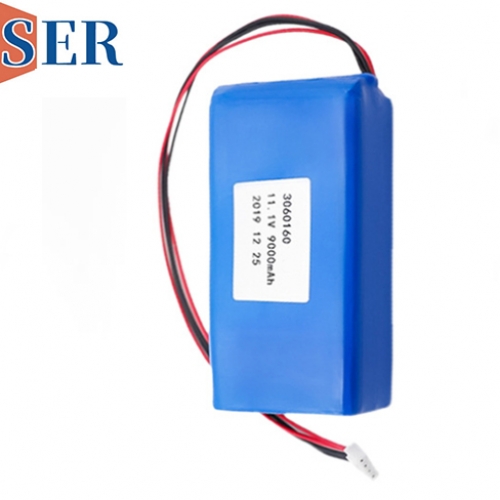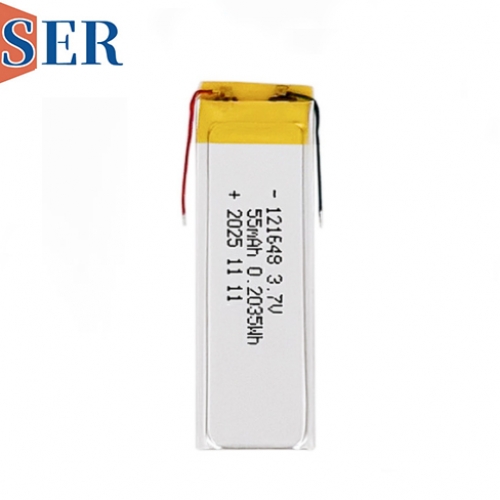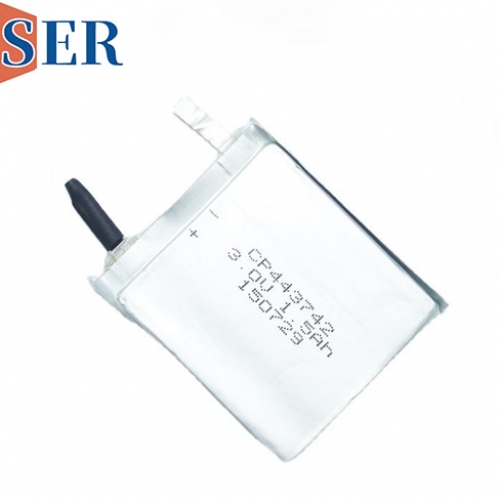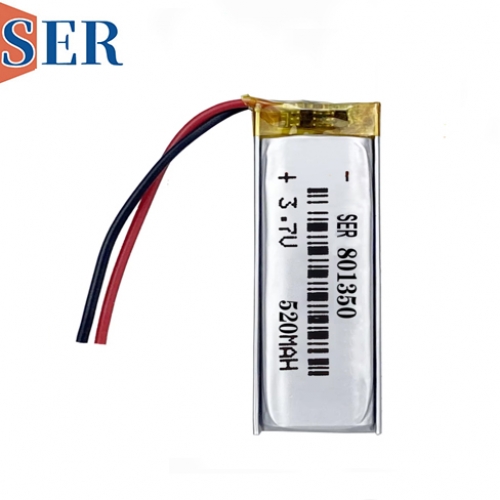Exploring the World of Ultrathin Batteries: Ultra thin Lipo battery 042238 3.7V 16mAh
Exploring the World of Ultrathin Batteries: Ultra thin Lipo battery 042238 3.7V 16mAh
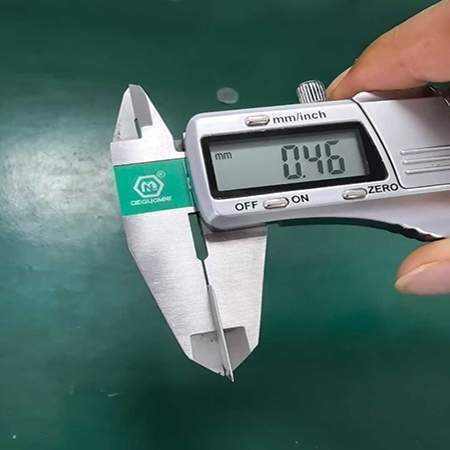
Abstract:
The advent of ultrathin batteries has marked a significant leap in the realm of portable electronics, enabling devices to become increasingly sleek, lightweight, and versatile. This article delves into the various types of ultrathin batteries, including the specific model 042238, super-thin 3.7V 16mAh batteries, paper batteries, and Lithium polymer (Lipo) batteries. It explores their construction, applications, advantages, challenges, and the future trajectory of this innovative technology.
Keywords: Ultrathin battery, 042238, super thin battery, paper battery, Lipo battery, Lithium polymer battery, portable electronics, rechargeable battery.
1. Introduction
In the ever-evolving landscape of technology, the demand for smaller, lighter, and more efficient devices has never been greater. From wearable technology and smartcards to medical implants and Internet of Things (IoT) devices, the need for compact power sources that can sustain functionality without adding bulk has become paramount. Ultrathin batteries have emerged as a solution to this challenge, offering a blend of high energy density, flexibility, and scalability that traditional batteries struggle to match.
2. Understanding Ultrathin Batteries
Ultrathin batteries are characterized by their exceptionally thin profile, often measuring in micrometers rather than millimeters. These batteries leverage advanced materials science and engineering to achieve their compact form factor while maintaining or even enhancing performance metrics such as energy density, cycle life, and safety.
2.1 Types of Ultrathin Batteries
042238 Ultrathin Battery: This model, designated by its dimensions (possibly 4.2mm x 2.2mm x 3.8mm, though exact specifications may vary by manufacturer), is a prime example of how ultrathin batteries are tailored to meet specific form factor requirements without compromising on performance.
Super Thin Battery 3.7V 16mAh: These batteries are designed for applications requiring a balance between high voltage (3.7V) and moderate capacity (16mAh), making them suitable for low-power IoT devices, smart labels, and wearable sensors.
Paper Batteries: A cutting-edge innovation, paper batteries integrate electrochemical components into flexible, paper-like substrates, offering unparalleled flexibility and environmental friendliness. They are particularly promising for disposable electronics and smart packaging.
Ultrathin Lipo Battery: Lithium polymer (Lipo) batteries, renowned for their high energy density and rechargeability, have been miniaturized into ultrathin formats to power a wide range of consumer electronics, from smartwatches to Bluetooth earbuds.
3. Construction and Materials
The construction of ultrathin batteries involves a careful selection of materials to ensure optimal performance and safety. Key components include:
Electrodes: Typically made from lithium cobalt oxide (LiCoO2), lithium iron phosphate (LiFePO4), or other advanced materials, the electrodes are engineered to maximize charge storage capacity while minimizing thickness.
Electrolyte: A gel-like or solid-state electrolyte facilitates ion movement between the electrodes, crucial for battery operation. Solid-state electrolytes are gaining traction due to their improved safety and potential for higher energy densities.
Separator: A thin, porous membrane prevents direct contact between the electrodes, preventing short circuits while allowing ion flow.
Current Collectors: Made from materials like aluminum or copper, current collectors distribute electrical current evenly across the electrodes.
Encapsulation: To protect the battery from environmental factors and physical damage, ultrathin batteries are often encapsulated in flexible, thin films or coatings.
4. Applications of Ultrathin Batteries
The versatility of ultrathin batteries has opened up a myriad of applications across various industries:
Wearable Technology: From fitness trackers to augmented reality glasses, ultrathin batteries power the next generation of wearables, enabling continuous monitoring and interaction without the burden of heavy batteries.
Medical Devices: Implantable medical devices, such as pacemakers and neural stimulators, benefit from ultrathin batteries' compact size and long cycle life, reducing the need for frequent surgical replacements.
IoT and Smart Sensors: The proliferation of IoT devices necessitates power sources that can be seamlessly integrated into small, often disposable, form factors. Ultrathin batteries fit this bill perfectly, enabling smart labels, environmental sensors, and asset tracking systems.
Consumer Electronics: Smartphones, tablets, and laptops are continually pushing the boundaries of thinness and portability. Ultrathin batteries contribute to this trend by providing ample power without adding significant weight or thickness.
5. Advantages of Ultrathin Batteries
Increased Design Flexibility: The thin profile of these batteries allows for more creative and ergonomic device designs, enhancing user experience.
Higher Energy Density: Despite their small size, ultrathin batteries often achieve competitive energy densities, ensuring prolonged device operation.
Improved Safety: Advances in materials and manufacturing processes have led to safer battery designs, reducing the risk of thermal runaway and explosion.
Environmental Friendliness: Some ultrathin batteries, like paper batteries, are biodegradable or recyclable, aligning with sustainability goals.
6. Challenges and Limitations
Despite their numerous advantages, ultrathin batteries face several challenges:
Manufacturing Complexity: The precise layering and assembly of ultrathin components require advanced manufacturing techniques, increasing production costs and complexity.
Cycle Life: While some ultrathin batteries offer impressive cycle lives, others may degrade faster due to material limitations or design constraints.
Thermal Management: The compact form factor of ultrathin batteries can make effective thermal management more challenging, potentially affecting performance and safety.
Cost: The high cost of raw materials and manufacturing processes can limit the widespread adoption of ultrathin batteries, especially in price-sensitive markets.
7. The 042238 Ultrathin Battery: A Closer Look
The 042238 ultrathin battery, though a specific model, exemplifies the advancements in ultrathin battery technology. Its compact size (assumed to be 4.2mm x 2.2mm x 3.8mm) makes it ideal for applications where space is at a premium. Despite its small footprint, it likely offers a balance of voltage and capacity suitable for powering low- to medium-power devices. The choice of materials and manufacturing process for the 042238 would have been optimized to ensure high energy density, long cycle life, and safety, all while maintaining its ultrathin profile.
8. Super Thin Battery 3.7V 16mAh: Powering the Future of IoT
The 3.7V 16mAh super thin battery represents a niche within the ultrathin battery market, catering specifically to IoT and wearable device applications. Its high voltage and moderate capacity make it suitable for devices that require continuous, low-power operation, such as smart sensors and activity trackers. The challenge for manufacturers lies in balancing the battery's form factor with its performance, ensuring that it can deliver reliable power over extended periods without frequent recharging.
9. Paper Batteries: The Next Frontier in Flexible Electronics
Paper batteries are a testament to the innovative spirit driving ultrathin battery technology. By integrating electrochemical components into flexible, paper-like substrates, these batteries offer unparalleled flexibility and environmental friendliness. Their potential applications range from disposable electronics to smart packaging, where they can power sensors or indicators without adding significant bulk. However, the commercialization of paper batteries faces hurdles such as scalability, cost, and performance consistency, which researchers are actively addressing.
10. Ultrathin Lipo Batteries: Redefining Portable Power
Lithium polymer (Lipo) batteries have long been the powerhouse of choice for consumer electronics due to their high energy density and rechargeability. Ultrathin Lipo batteries take this a step further, offering the same benefits in a more compact form factor. They are widely used in smartwatches, Bluetooth earbuds, and other wearables, where size and weight are critical factors. The challenge for ultrathin Lipo batteries lies in maintaining safety and cycle life while pushing the boundaries of thinness and capacity.
11. Future Trends and Innovations
The future of ultrathin batteries is bright, with ongoing research and development focused on overcoming current limitations and unlocking new possibilities:
Solid-State Electrolytes: The transition from liquid to solid-state electrolytes promises improved safety, higher energy densities, and faster charging times.
Nanotechnology: The integration of nanomaterials into battery electrodes and electrolytes could lead to breakthroughs in performance, such as increased energy density and cycle life.
3D Printing: Advances in 3D printing technology could enable the rapid prototyping and customization of ultrathin batteries, accelerating innovation and reducing production costs.
Energy Harvesting: Combining ultrathin batteries with energy harvesting technologies, such as solar cells or piezoelectric materials, could create self-sustaining devices that never need to be recharged.
12. Conclusion
Ultrathin batteries represent a paradigm shift in portable power, offering a blend of high energy density, flexibility, and scalability that traditional batteries struggle to match. From the 042238 model to paper batteries and ultrathin Lipo batteries, these innovations are driving the next wave of technological advancement across industries. While challenges remain, ongoing research and development promise to overcome these hurdles, paving the way for a future where devices are not only smaller and lighter but also more powerful and sustainable. As we continue to push the boundaries of what is possible, ultrathin batteries will undoubtedly play a pivotal role in shaping the technology landscape of tomorrow.


